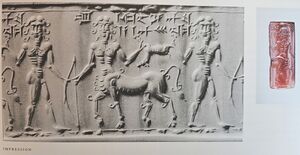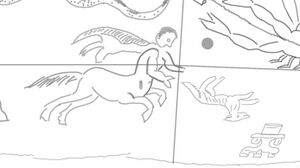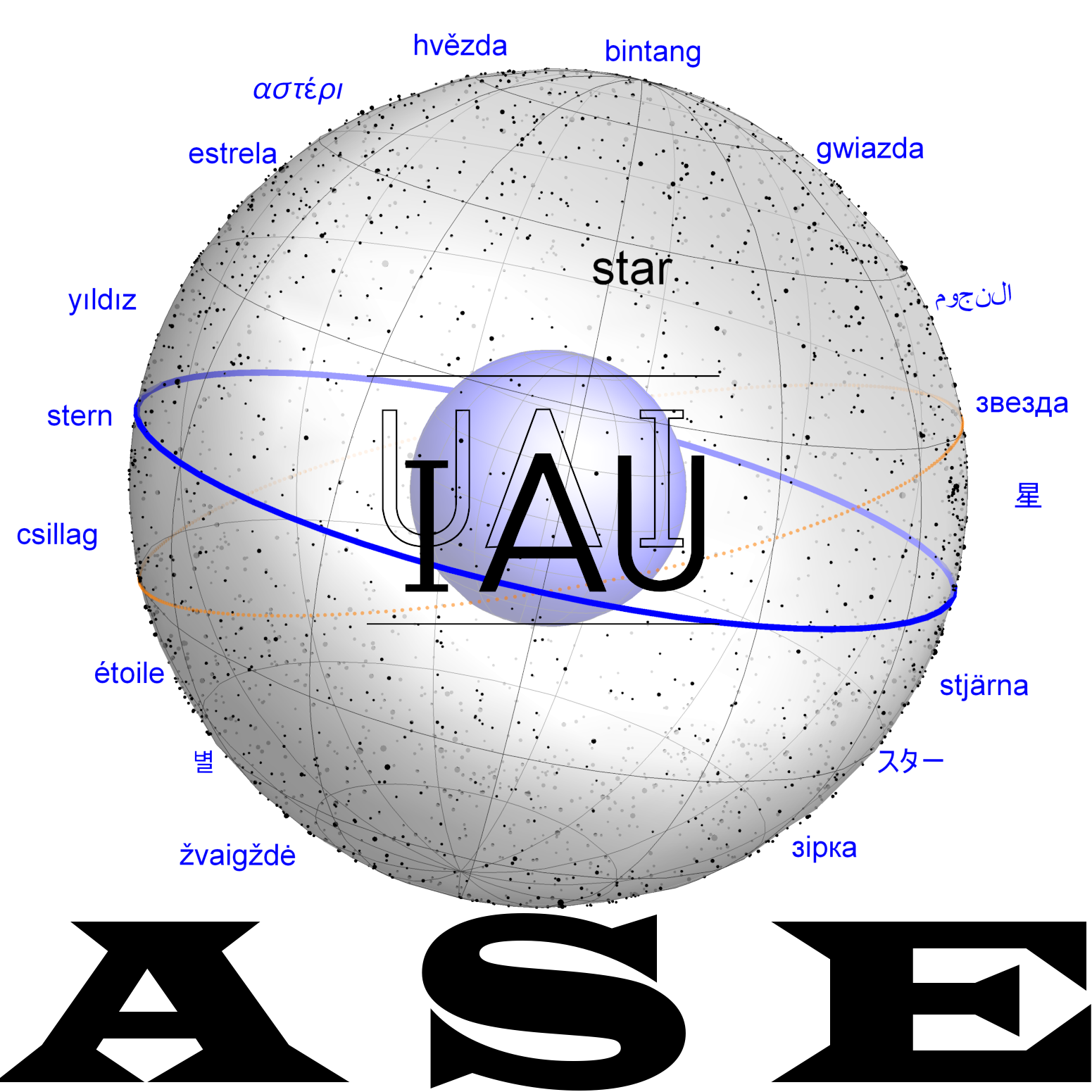Lupus
One of the 88 modern IAU constellations. Lupus forms part of the super-constellation Centaurus-Lupus-Ara which mythologically belong together.
Etymology and History
The Greek constellation Θηρίον (Therion, i.e. 'the Beast') is in the same position as the Mesopotamian constellation UR.IDIM, the Mad Dog. The Mesopotamian constellation might depict a rabid dog or wolf: the wording is can refer to both. However, Greek uranology took over the Mesopotamian constellation, it was transferred to an animal sacrificed to the gods. An image of the Babylonian Urmahlullu-daemon that was discovered in 2019 on a seal suggests some potential that the Greek image of a centaur-like creature who sacrificed the animal may (or may not) be based on one of the ancient Mesopotamian interpretations of Urmahlullu holding a dead animal. Together with Centaurus and Ara, Lupus forms a super-constellation.
Babylonian
Greco-Roman
Aratos
Eratosthenes
Hipparchus
Geminos
Almagest
| Θηρίου ἀστερισμός | Beast | ||
|---|---|---|---|
| id | Greek
(Heiberg 1898) |
English
(Toomer 1984) |
ident. |
| 1 | ὁ ἐπ’ ἄκρου τοῦ ὀπισθίου ποδὸς πρὸς τῇ χειρὶ τοῦ Κενταύρου. | The star at the end of the hind leg, by the [right] hand of Centaurus | |
| 2 | ὁ ἐπὶ τῆς ἀγκύλης τοῦ αὐτοῦ ποδός | The star on the bend in the same leg | |
| 3 | τῶν κατὰ τῆς ὡμοπλάτης β’ ὁ ἠγούμενος | The more advanccd of the 2 stars just over the shoulder-blade | |
| 4 | ὁ ἐπόμενος αὐτῶν | The rearmost of them | |
| 5 | ὁ ἐν μέσῳ τῷ σώματι τοῦ Θηρίου | The star in the middle of the body of Lupus | |
| 6 | ὁ ἐκ τῇ κοιλίᾳ ὑπὸ τὴν λαγόυα | The star in the belly, under the flank | |
| ὁ ἐπὶ τοῦ μηροῦ | The star an the thigh | ||
| τῶν πρὸς τῇ ἐκφύσει τοῦ μηροῦ β’ ὁ βορειότερος | The northernmost of the 2 stars near the place where the thigh joins [the body] | ||
| ὁ φοτιώτερος αὐτῶν | The southernmost of them | ||
| ὁ ἐπὶ τοῦ ἄκρου τῆς ὀσφύος | The star on the end of the rump | ||
| τῶν ἐν τῷ ἄκρῳ τῆς οὐρᾶς γ’ ὁ νότιος | The southernmost of the 3 stars in the end of the tail | ||
| ὁ μέσος τῶν τριῶν | The middle one of the three | ||
| βόρειος αὐτῶν | The northernmost of them | ||
| τῶν ἐν τῷ αὐχένι β ὁ φοτιώτερος | The southernmost of the 2 stars in the neck | ||
| βορειότερος αὐτῶν | The northernmost of them | ||
| τῶν ἐν τῷ ῥύγχει ὁ ὁ προηγούμενος | The more advanced of the 2 stars in the snout | ||
| ὁ ἐπόμενος αὐτῶν | The rearmost of them | ||
| τῶν ἐν τῷ ἐμπροσθίῳ ποδὶ β ὁ νοτιώτερος | The southernmost of the 2 stars in the front leg | ||
| τῶν ἐν τῷ ἐμπροσθίῳ ποδὶ β ὁ νοτιώτερος | The southernmost of the 2 stars in the front leg | ||
| all | ἀστέρες ἰ3, ὥν γ’ μεγέθους β, δ’ ἱα, ε ς | { 19 stars, 2 of the third magnitude, 11 of the fourth, 6 of the fifth} |
Transformation of Images
Mythology
In Babylonian mythology, the centaur-like lion-man called Urmahlullu was considered a monster, a door keeper (Wiggerman 1992, 52), which makes this creature a protective spirit, a benevolent creature (cf. Krebernik in UR.IDIM).
The mythographers of antiquity do not agree on what is depicted here: Hyginus referred to the animal as simply ‘a victim’, while Germanicus Caesar said that the centaur was either carrying game from the woods, or was bringing gifts to the altar.[1] On the marble globe of the Atlas Farnese, the centaur holds a sacrificial animal in his right hand, which he brings to the censer (Ara). Originally, the sacrificed creature was not specified, but it was called ‘the beast’. Only later was it renamed Lupus (Latin: The Wolf).
The association of the dead beast with a wine-skin, also recorded by Eratosthenes, appears as a logical consequence of the sacrificed animal, as the skin of slaughtered animals can be used as a drinking vessel. Some Saharan nomads still use this today. It is therefore clear that in Greek uranography the beast belongs to the centaur called ‘Cheiron’ who is regarded as the only wise centaur. He was the teacher of numerous Greek heroes, and his image in the sky also symbolizes cultivated behavior and religion as he sacrifices the beast on the altar.
IAU Star Names
There are no classical star names in Lupus. In 2023, it was suggested to use the original Babylonian name of the UR.IDIM as name for the brightest star of the (later Greek, Greco-Roman and modern) constellation.





















